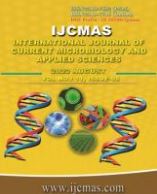


 National Academy of Agricultural Sciences (NAAS)
National Academy of Agricultural Sciences (NAAS)

|
PRINT ISSN : 2319-7692
Online ISSN : 2319-7706 Issues : 12 per year Publisher : Excellent Publishers Email : editorijcmas@gmail.com / submit@ijcmas.com Editor-in-chief: Dr.M.Prakash Index Copernicus ICV 2018: 95.39 NAAS RATING 2020: 5.38 |
Silk, the "Queen of Textiles" is an inseparable part of Indian culture and tradition over thousands of year. The internal high market demand makes India, the largest silk consuming country as no ritual is completed here without it, and the second largest silk producing country of the world with more than 18% to the world’s silk production. Being an agro-based industry, this sector includes both agricultural and industrial aspects and thus refers to the work started from mulberry cultivation, silk worm rearing, and obtaining silk up to the making of finished silk product. Indian climate is appropriate for the production of all the varieties of silk called Mulberry, Tasar, Muga and Eri and among these Mulberry silk is the most renowned and popular form of silk. This industry helps in shaping the economic destiny of the rural people especially for the overpopulated rural economy based country like India as it mainly depends on human power and helps in poverty alleviation whereas, being retreated from the developed countries because of the increasing labour cost. It is appropriate for both marginal and small scale land holders because of its low investment and high assured return at regular interval. In West Bengal, Silk industry plays a significant economic role by providing employment over 1.2lakhs rural families round the year (Seri States Profile, 2019). The district Murshidabad of West Bengal is well equipped in both the production and weaving of mulberry silk and so as a matter of fact the silk industry of the state mainly goes by the name of ‘Murshidabad Silk’ as the silk weaving belts are confined around this district. This paper intends to analyse the importance of silk as a remunerative cash crop of Murshidabad.
 |
 |
 |
 |
 |